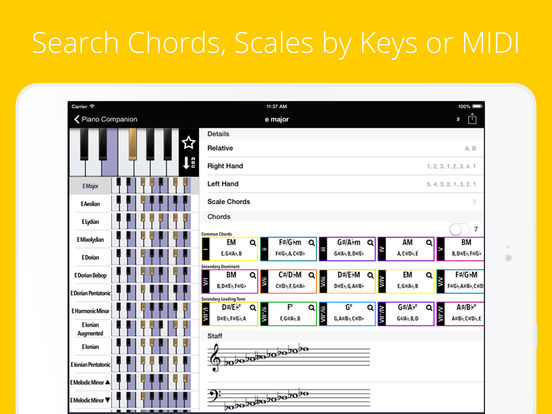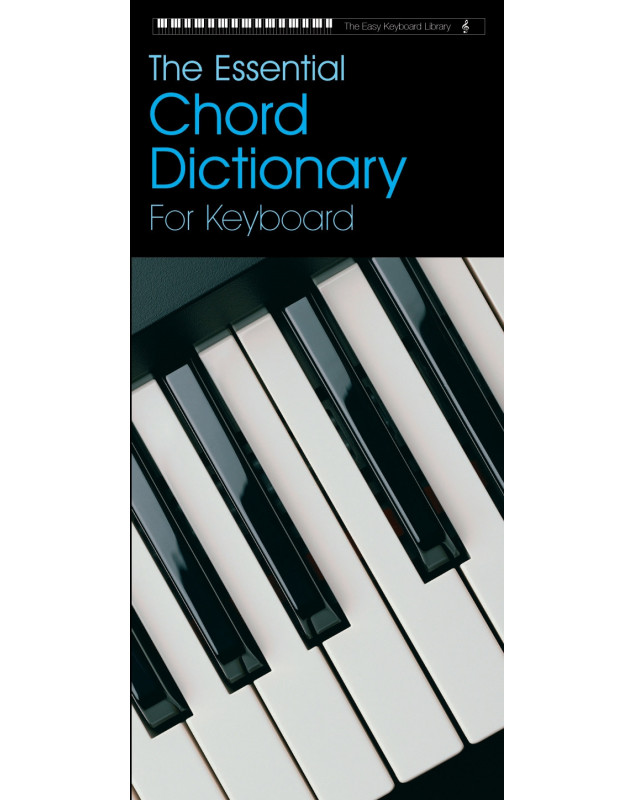
Like most things in music, like rhythm, form, or dynamics, chord types aren’t absolute and isolated objects. *Where “M3” is the major third and “m3” is a minor third. These are exemplified in the table below: Type of chordĪmount of half steps and total intervallic content The order in which they appear will determine the quality of the piano chord at hand. These intervals are always thirds, both major and minor. On top of having a radically different sound and emotional properties, these chordal structures are differentiated from each other by the ordering and quality of the intervals between its constituent factors. Namely, major, minor, diminished, and augmented. Western tonal music and its particular tuning system produce only four distinct types of triads. These are essentially small collections of three notes which follow a certain ordering of third intervals within a scalar reference system. Triadic piano chords are the most simple and common types of chords we can find in music.
CHORD DICTIONARY PIANO SERIES
These intervals are then categorized in a series of numbers directly correlated to the number of half steps and keys implied. It should also be noted that our tuning system only contains twelve distinct pitches, meaning that after 12 half steps the system repeats itself with the last note carrying the same name as the initial one. This method to measure distance can be exemplified by playing any key of the keyboard and then playing the most immediate key over or under it. A good way of understanding intervals is through the use of the smallest possible distance between two distinct notes, the half step. A musical interval is the measure of the distance between any two given pitches within a reference system.

CHORD DICTIONARY PIANO HOW TO
However, check out my beginner piano lesson about how to play piano chord inversions to learn how you can change the chord's position for smooth transitions when moving from one chord to the next.To be able to learn to quickly construct piano chords, we should first examine their most fundamental building blocks, the aforementioned intervals. Use the piano chords chart below to remind yourself how to play simple triads in root position. You can either sing the song's melody (or have someone else sing it!) and make up your own accompaniment or pick out the melody in one hand and play the chords in the other.
CHORD DICTIONARY PIANO FREE
If you already know the melody, you only need the lyrics and the chords! Here is a free example with only chords and melody. When playing chord piano, you can use, for example, a "Fakebook." I use this Easy Fake Book with my students, which is a great way to learn to play chords and melody following a lead sheet.Ī lead sheet has only the melody written with notes (or only lyrics), and above it, the chords are written as chord symbols, like Cmaj7, Eb dim., or Bm, for example.

For example, it is written: D dim (Root=D, diminished chord). That is why it is often referred to as a Dominant 7th chord with no root. This gives the chord a sound like it really wants to go somewhere, to be resolved somehow. The Diminished Triad is made from only minor thirds.It is written for ex.: Am (Root=A, minor chord). This gives the sound of "minor" a more "sad," "darker" sound.


The Minor Triad is built with a minor third and, on top, a major third.It is written for ex.: E (Root=E, major chord). The Major Triad (a three-note chord) is made of a major third and, on top, a minor third this creates the specific sound of "major" a "happier," "lighter" sound.


 0 kommentar(er)
0 kommentar(er)
